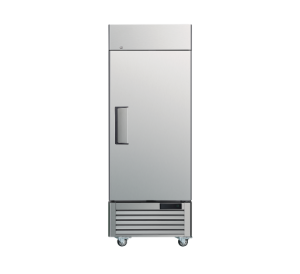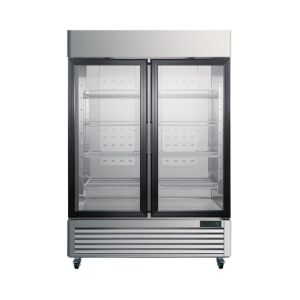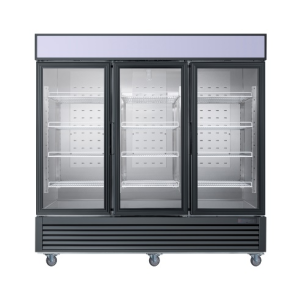
Why Air-Cooled Commercial Refrigerators Outperform Traditional Direct-Cooling Models in Commercial Settings
Air-cooled commercial refrigerators offer significant advantages over traditional direct-cooling (natural convection) models, particularly in environments demanding precise temperature control, ease of maintenance, and high cooling efficiency, such as food service, supermarkets, and healthcare. Below are the core reasons why frost-free models are recommended for commercial use:

Natural refrigerant alternatives
Commercial refrigeration
- Auto-Defrost Function: Eliminates Downtime for Maintenance
– Direct-Cooling Refrigerators: Rely on natural frost buildup on evaporators for cooling, requiring manual defrosting (power-off, ice scraping). This process disrupts operations and increases labor costs.
– Frost-Free Refrigerators: Use built-in heaters + fan circulation to automate defrosting. Defrost water evaporates or drains away without manual intervention, ensuring 24/7 operation and minimizing food spoilage or revenue loss.
- Superior Temperature Uniformity: Ensures Storage Quality
– Direct-Cooling Models: Cold air sinks naturally, creating significant temperature differences (≥5℃) between areas near and far from the evaporator. This risks partial freezing or spoilage of goods.
– Frost-Free Models: Fans force cold air circulation, achieving even temperature distribution (variation≤2℃). Ideal for temperature-sensitive items like pharmaceuticals, premium ingredients, or high-value products, reducing waste.
- Faster Cooling Response: Handles Frequent Door Openings
– Commercial Challenges: High-traffic kitchens, supermarkets, or labs experience frequent door openings, causing rapid cold air loss.
– Frost-Free Advantage: Rapid cooling recovery minimizes temperature fluctuations, maintaining consistent freshness of stored items.
- Lower Long-Term Maintenance Costs: Time and Labor Savings
– Direct-Cooling Drawbacks: Manual defrosting demands frequent ice removal. Over time, frost buildup accelerates seal degradation and increases energy consumption.
– Frost-Free Benefits: Auto-defrost reduces labor needs and eliminates frost-related wear, extending equipment lifespan (especially for compressors and seals).
- Higher Space Efficiency: Adapts to Diverse Commercial Needs
– Frost-Free Design: Hidden evaporators eliminate the need for defrost spacing, enabling flexible shelving layouts to accommodate bulky or irregularly shaped items.
– Multi-Zone Temperature Control: Air-cooled systems easily support independent zones (e.g., chilled, frozen, fresh) for versatile commercial storage.
- Superior Heat Resistance: Performs in High-Temperature Environments
– Direct-Cooling Limitations: Passive heat dissipation struggles in hot environments (e.g., kitchens), risking compressor overload.
– Frost-Free Resilience: Active fan-driven cooling maintains efficient operation even in high ambient temperatures, ideal for kitchens, outdoor setups, or confined spaces.

Disadvantages of Frost-Free Models & Considerations
– Higher Initial Cost: Complex design raises prices by 10%–30% compared to direct-cooling units. However, long-term savings on maintenance and reduced spoilage offset this gap.
– Moderate Noise: Fan operation generates noise (~40–50 dB). Opt for low-noise models and avoid ultra-quiet zones.
– Slightly Higher Energy Use: Auto-defrost consumes extra power, but modern frost-free units minimize this via energy-efficient tech (e.g., inverters).
Recommended Applications
– Opt for Frost-Free:
Supermarket display cases, restaurant chains, medical storage, 24/7 convenience stores, bakeries (precision temperature control required).
– Consider Direct-Cooling:
Low-usage small storage rooms, budget-limited scenarios with tolerance for manual maintenance.

Summary: Frost-free commercial refrigerators excel in auto-defrosting, temperature consistency, and rapid cooling, enhancing operational efficiency and storage quality in high-demand environments. While initial costs are higher, their long-term benefits justify the investment for businesses prioritizing reliability and reduced waste. Evaluate models based on specific operational needs and lifecycle cost analysis.
Keywords:
